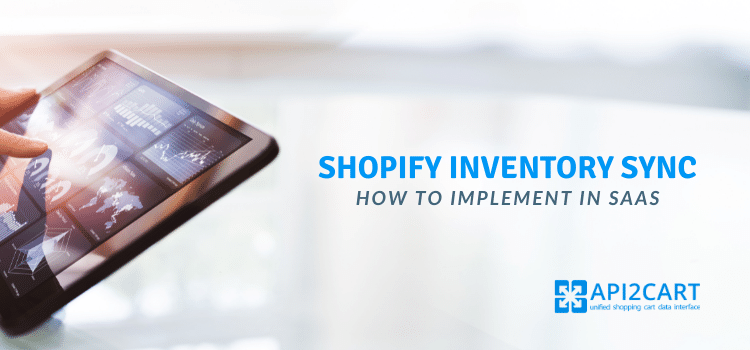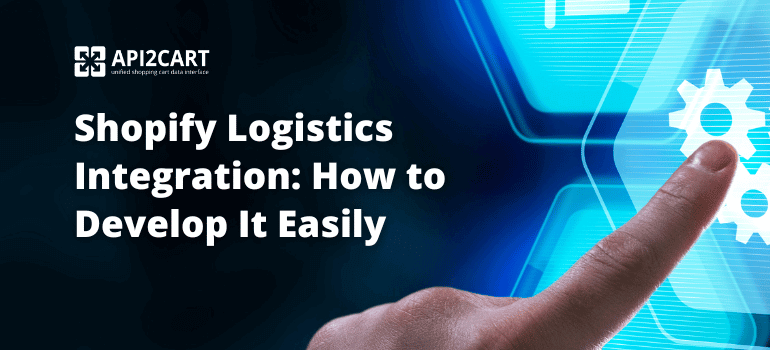
Consider this—your competitors in the SaaS industry are looking for ways to capture the market. As a result, they keep updating their SaaS solutions for performance, usability, and productivity. If you want to get an edge over them, you need to upgrade your software as well. Not just that, the new version of your software must be advanced enough to outperform the functionalities of your competitors. Shopify inventory sync is one of the ways to improve your software possibilities.
This article will walk you through Shopify inventory sync as a powerful feature to include in your SaaS solutions.
Although the article is primarily inclined toward Shopify, your software needs to connect with multiple eCommerce platforms. If you provide inventory synchronization feature as a primary part of your eCommerce software, integration with shopping platforms and marketplaces is your fundamental requirement. The reason - that’s where you get the data to synchronize the inventory. Not only this, but you will be able to cater to many other needs of your clients with Shopify integration.
Since we are focusing on Shopify, you should know the ins and outs of the platform and what it takes to implement Shopify inventory sync in your software. We will give you a clear idea of everything.
Shopify Integration Benefits
Implementing Shopify inventory sync in your SaaS solution entails many benefits for you and your clients. Take a look.
Shopify is one of the leading shopping platforms in the eCommerce industry. It allows online retailers to build successful online businesses. It has been actively used by more than 3,6 million customers across the globe.
Country-wise, the Shopify platform is popular in the United States with 921,000+ online stores, the United Kingdom with 49,000+ e-stores, Australia with 38,000+ e-stores, and Canada with 29,000+ e-stores. Considering the huge customer base Shopify has, it introduces a lot of opportunities for B2B SaaS solution providers.
Here are some of the benefits of Shopify integration for your business.
Broaden your market share
When you integrate with Shopify, you get an opportunity to work with all the online store owners the platform has, apart from your clients. You can connect with more than 3 million business owners who can be your potential clients. These are your prospects whom you can pitch your solutions to when you get the right opportunity. Moreover, since these business owners are from multiple countries across the globe, you get to expand your business internationally.
Manage customers and inventory seamlessly
With Shopify inventory sync implementation, you can not only get access to inventory data from Shopify but also other data. It is related to the customers, orders, products, and categories from stores based on Shopify. When you have all the data in a single place, you can easily manage it across all the sales channels.
Make more profits
When you have more clients to work with and a full-fledged SaaS solution to help them, your ROI is definitely going to level up. The investment that you make in establishing the integration will pay off with more customers, and hence, more profits for your SaaS business.
SaaS that Provide Inventory Sync Feature
Now that you know—Shopify inventory sync requires integration with Shopify platform, it’s important you understand the software that needs connection with such an eCommerce platform. Here are some SaaS solutions that provide inventory synchronization functionality.
Multi-channel systems
As the name suggests, multi-channel systems is an eCommerce software that allows online merchants to sell their products on more than one sales channel, including Shopify, Amazon, eBay, WooCommerce, etc. Hence, if a merchant sells on let’s say three platforms together—they need to sync inventory across all these platforms. Therefore, along with Shopify inventory sync, they need to implement integration with all these platforms to get inventory data from them. When a product is sold on one platform and the inventory gets updated on it, the multi-channel software then updates the inventory across all the platforms to give the merchants a clear view of their available stock.
Inventory management systems
Inventory management systems serve the primary purpose of syncing inventory — keeping track of products sold and in-stock. It ensures that a product is never undersold or oversold which can otherwise affect the reputation of online merchants. To process such information, inventory systems need to integrate with eCommerce platforms like Shopify to get inventory data from online stores based on these platforms. When a product is sold on the store, the software automatically updates the inventory levels in the database, showing available stock to the merchants on their dashboard in one place.
ERP systems
An ERP system also allows tracking and syncing inventory across all the sales channels a merchant has. It can accurately handle inventory counts on these channels.
Your Shopify Integration Solution
If you want to implement the Shopify inventory sync feature in your SaaS solution without any pitfalls, API2Cart is your go-to solution. It is a unified API that allows B2B SaaS solutions like multi-channel software, inventory management software, ERP or any other systems to integrate with more than 40 eCommerce platforms at once.
Using API2Cart, you don’t need to look after the maintenance and upgrades when platforms release new versions. Instead, we always keep integrations up-to-date.
Apart from these benefits, API2Cart also eliminates the heavy investments which are required in in-house integration development. For instance, you will need to hire, onboard, and train advanced developers to establish integration for Shopify inventory sync. You will also need to set up the infrastructure required for developing the integration. Added to this are the costs of upgrades and maintenance that your developers will do.
On top of it, the time and money required to set up integrations and look after their maintenance are more in in-house development than in third-party integration development with API2Cart.
How to Easily Implement Shopify Inventory Sync Functionality
API2Cart provides you with three different API methods to implement inventory sync in your SaaS solutions. Take a look.
webhook for order.add event - get notifications every time someone places a new order on the merchant’s store. As a result, you can up-to-date information about all the orders placed on the store, save your API requests, and decrease server load.
order.list - access the list of orders placed on the merchant’s store. You can also track the new orders with this method.
product.update - update the stock levels on all the platforms when someone places an order on the merchant’s store.
By using these methods, you will be able to implement inventory synchronization features for various popular eCommerce platforms.
If you have any questions about how our service works, please feel free to contact us. We are always ready to help you with any matter.



